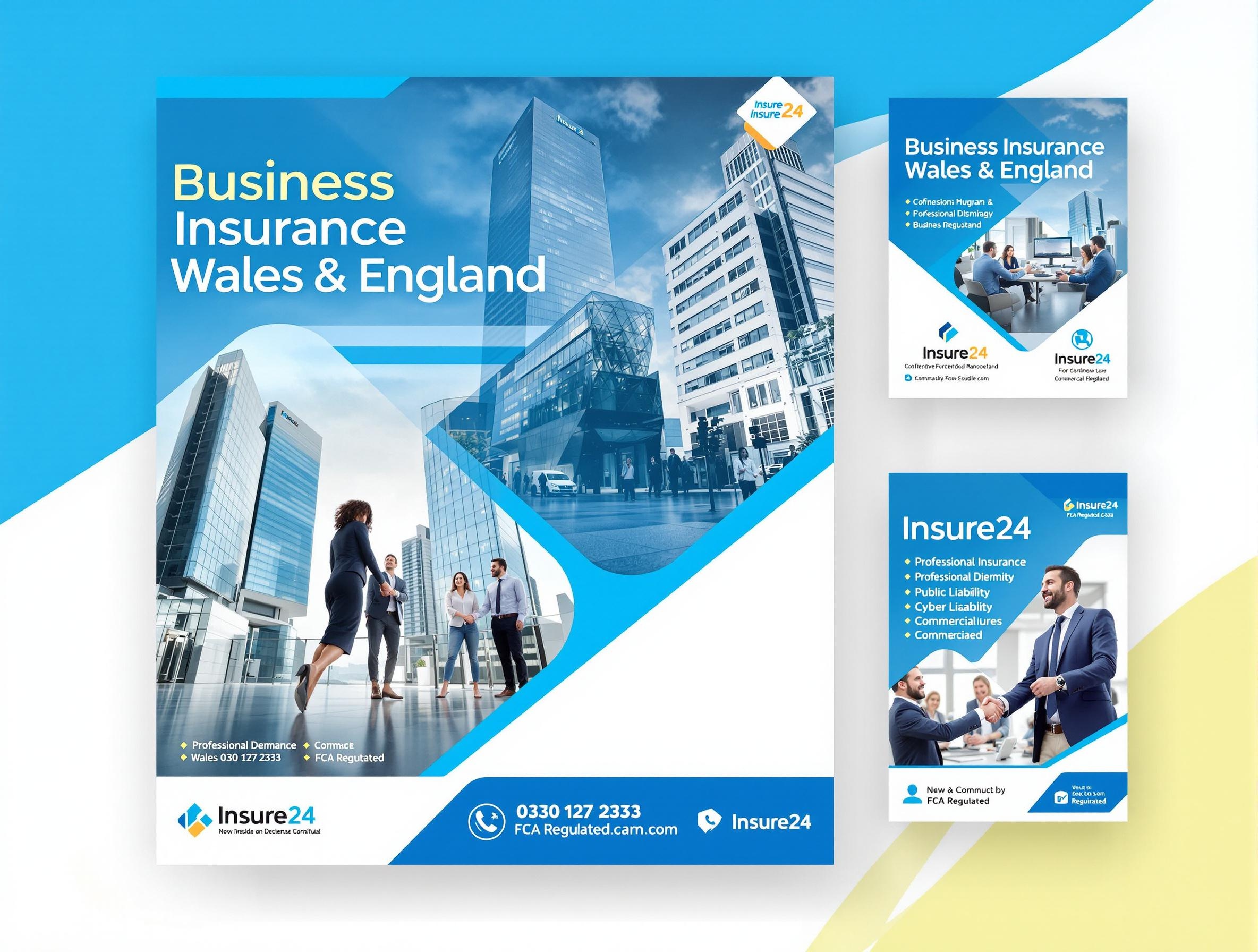Limited Company Employers Liability Insurance: Legal Requirements & Staff Protection
Introduction
Operating a limited company in the UK comes with numerous responsibilities, and one of the most critical legal obligations is providing adequate employers liability insurance for your staff. This comprehensive coverage isn't just a regulatory requirement – it's essential protection that safeguards both your employees and your business against the financial consequences of workplace injuries and occupational illnesses.
For limited company directors, understanding the intricacies of employers liability insurance is crucial for maintaining compliance, protecting your workforce, and ensuring business continuity. This guide explores the legal requirements, coverage essentials, and best practices for securing comprehensive staff protection through employers liability insurance.
Legal Requirements for Limited Companies
Compulsory Insurance Under UK Law
The Employers' Liability (Compulsory Insurance) Act 1969 mandates that virtually all UK employers, including limited companies, must maintain employers liability insurance. This legal requirement applies to companies with one or more employees, making it one of the most fundamental insurance obligations for business owners.
Limited companies must maintain minimum coverage of £5 million per claim, though most insurers now provide £10 million as standard. The insurance must cover all employees working under contracts of service or apprenticeship, including part-time staff, temporary workers, and those on zero-hours contracts.
Certificate Display Requirements
Companies must display their current employers liability insurance certificate prominently in each workplace where employees can easily read it. The certificate must show the policy number, insurer details, and coverage period. Failure to display the certificate can result in fines of up to £1,000 per day.
Digital display is now acceptable, provided all employees can access the certificate electronically. Many limited companies use company intranets or digital notice boards to meet this requirement efficiently.
Record Keeping Obligations
Limited companies must retain employers liability insurance certificates for at least 40 years from the policy end date. This extended retention period reflects the long latency period of some occupational diseases, which may not manifest until decades after initial exposure.
Companies should maintain comprehensive records including policy documents, premium receipts, claims correspondence, and any variations to coverage. These records are essential for defending against historical claims and demonstrating continuous compliance.
Understanding Staff Protection Coverage
Core Protection Elements
Employers liability insurance provides comprehensive protection for workplace-related injuries and illnesses affecting your employees. The coverage typically includes compensation for medical expenses, lost wages, rehabilitation costs, and legal fees associated with employee claims.
The insurance covers accidents occurring during normal work activities, occupational diseases developed through workplace exposure, and injuries sustained while traveling on company business. This broad protection ensures your employees receive appropriate compensation while protecting your company from potentially devastating financial liability.
Legal Defense Coverage
A crucial component of employers liability insurance is legal defense coverage, which provides expert legal representation when facing employee claims. This includes solicitor fees, court costs, expert witness expenses, and settlement negotiations.
The insurance company typically appoints specialist employment lawyers who understand the complexities of workplace injury claims. This professional support is invaluable for limited companies that may lack in-house legal expertise to handle complex liability cases.
Compensation Claim Support
Modern employers liability policies provide comprehensive claims management services, guiding companies through the entire claims process from initial notification to final settlement. This support includes claim investigation, evidence gathering, and liaison with medical professionals and rehabilitation specialists.
The insurer's claims team works to achieve fair settlements while minimizing disruption to your business operations. They also provide guidance on implementing preventive measures to reduce future claim risks.
Industry-Specific Considerations
Office-Based Limited Companies
Companies operating primarily in office environments face specific risks including repetitive strain injuries, slips and falls, and stress-related conditions. Employers liability insurance for office-based businesses should address these modern workplace risks comprehensively.
Coverage should include protection against claims related to workstation ergonomics, mental health issues arising from workplace stress, and injuries from office equipment or furniture. Many insurers now offer specialized coverage for technology-related health issues affecting office workers.
Manufacturing and Industrial Companies
Limited companies involved in manufacturing or industrial operations face elevated risks requiring enhanced employers liability coverage. These businesses need protection against machinery-related injuries, chemical exposure claims, and industrial accident consequences.
Specialized coverage should address the unique risks of your industry, including exposure to hazardous substances, heavy machinery operation, and compliance with industry-specific safety regulations. Premium calculations typically reflect the increased risk profile of industrial operations.
Service-Based Companies
Companies providing professional or personal services face distinct liability risks related to client interactions, travel requirements, and specialized equipment use. Employers liability coverage should address these service-specific exposures comprehensively.
Consider coverage for employees working at client premises, those using company vehicles, and staff exposed to client-related risks. Service companies often require flexible coverage that adapts to changing work locations and client requirements.
Risk Assessment and Prevention
Workplace Risk Evaluation
Effective employers liability insurance begins with comprehensive workplace risk assessment. Limited companies should conduct regular evaluations identifying potential hazards, assessing risk levels, and implementing appropriate control measures.
Document all risk assessments thoroughly, including identified hazards, affected employees, control measures implemented, and review schedules. This documentation demonstrates your commitment to employee safety and can influence insurance premiums favorably.
Health and Safety Compliance
Maintaining robust health and safety standards reduces both claim frequency and insurance costs. Implement comprehensive safety policies, provide regular training, and ensure all equipment meets current safety standards.
Regular safety audits help identify emerging risks and ensure continued compliance with evolving regulations. Many insurers offer premium discounts for companies demonstrating excellent safety records and proactive risk management.
Employee Training Programs
Comprehensive employee training reduces accident rates and demonstrates your commitment to workplace safety. Provide regular training on equipment use, emergency procedures, and hazard recognition specific to your industry.
Document all training activities, including attendance records, training content, and competency assessments. This documentation proves your investment in employee safety and can support your defense against negligence claims.
Claims Management Process
Immediate Response Procedures
When workplace incidents occur, prompt and appropriate response is crucial for both employee welfare and claims management. Establish clear procedures for incident reporting, medical assistance, and insurer notification.
Ensure all managers understand their responsibilities following workplace accidents, including evidence preservation, witness statement collection, and communication protocols. Quick, professional response often influences claim outcomes significantly.
Investigation and Documentation
Thorough incident investigation provides essential evidence for claims defense and prevention of similar occurrences. Document the scene, interview witnesses, and preserve relevant evidence before it's disturbed or lost.
Maintain detailed incident records including photographs, witness statements, medical reports, and corrective actions taken. This comprehensive documentation supports fair claim resolution and demonstrates your commitment to continuous improvement.
Return-to-Work Programs
Effective return-to-work programs benefit both injured employees and your business by facilitating earlier return to productive employment. Develop flexible arrangements including modified duties, graduated hours, and workplace adjustments.
Collaborate with medical professionals, rehabilitation specialists, and the employee to create realistic return-to-work plans. These programs often reduce claim costs while demonstrating your commitment to employee welfare.
Policy Selection Criteria
Coverage Limit Considerations
While £5 million represents the legal minimum, most limited companies benefit from higher coverage limits reflecting modern compensation awards and legal costs. Consider your industry risks, employee numbers, and potential claim severity when selecting limits.
Many insurers now provide £10 million coverage as standard, with options for higher limits where justified by risk exposure. Balance adequate protection against premium costs, considering that insufficient coverage could threaten your company's survival.
Insurer Selection Factors
Choose insurers with strong financial ratings, excellent claims handling reputations, and experience in your industry sector. Research their approach to claims management, settlement practices, and support services offered to policyholders.
Consider insurers offering additional services such as health and safety consultancy, legal helplines, and risk management resources. These value-added services often justify slightly higher premiums through reduced claim frequency and improved compliance.
Policy Terms and Conditions
Review policy terms carefully, paying particular attention to exclusions, conditions precedent, and claims notification requirements. Ensure you understand your obligations under the policy and the circumstances that might void coverage.
Common exclusions include deliberate acts, criminal behavior, and certain high-risk activities. Understand these limitations and consider whether additional coverage is needed to address excluded risks.
Cost Management Strategies
Premium Optimization Techniques
Several strategies can help limited companies manage employers liability insurance costs while maintaining comprehensive protection. Implement robust health and safety programs, maintain good claims records, and consider higher voluntary excesses where appropriate.
Bundle employers liability coverage with other business insurance policies to achieve multi-policy discounts. Many insurers offer significant savings for comprehensive business insurance packages.
Risk Reduction Investments
Investing in workplace safety improvements often generates insurance premium savings that offset implementation costs. Consider ergonomic equipment, safety training programs, and environmental improvements that reduce claim risks.
Document all risk reduction initiatives and share this information with your insurer during renewal negotiations. Demonstrable safety improvements often justify premium reductions or enhanced coverage terms.
Claims Experience Management
Maintain detailed records of your claims history and implement measures to prevent recurring incidents. A strong claims record demonstrates effective risk management and supports favorable premium negotiations.
Work proactively with your insurer's risk management team to identify improvement opportunities and implement recommended changes. This collaborative approach often results in better terms and reduced premiums.
Regulatory Compliance Framework
Health and Safety Executive Requirements
The Health and Safety Executive (HSE) enforces employers liability insurance requirements alongside broader workplace safety regulations. Ensure your insurance coverage aligns with HSE expectations and industry-specific guidance.
Regular HSE inspections may review your insurance arrangements alongside safety procedures. Maintain current certificates and documentation to demonstrate compliance during any regulatory visits.
Industry-Specific Regulations
Many industries have additional insurance requirements beyond basic employers liability coverage. Research sector-specific regulations and ensure your coverage meets all applicable standards.
Professional bodies and trade associations often provide guidance on appropriate insurance levels for their members. Consult these resources when determining adequate coverage for your specific business activities.
Compliance Monitoring Systems
Establish systems to monitor ongoing compliance with insurance requirements, including certificate renewal, display requirements, and record keeping obligations. Automated reminders help prevent inadvertent lapses in coverage.
Regular compliance audits ensure all requirements are met consistently across all business locations. Document these reviews to demonstrate your commitment to regulatory compliance.
Future Considerations and Trends
Evolving Workplace Risks
Modern workplaces present new risks requiring updated insurance coverage approaches. Consider emerging risks such as mental health claims, remote working injuries, and technology-related health issues.
Climate change may introduce new workplace risks requiring enhanced coverage. Stay informed about evolving risk landscapes and adjust your insurance arrangements accordingly.
Legislative Changes
Employment law and insurance regulations continue evolving, potentially affecting your coverage requirements. Monitor legislative developments and consult with insurance professionals to ensure continued compliance.
Brexit has introduced some regulatory changes affecting UK businesses. Ensure your insurance arrangements remain compliant with current UK requirements and any specific post-Brexit provisions.
Technology Integration
Digital technologies are transforming insurance management, from online policy administration to claims reporting systems. Embrace these tools to improve efficiency and maintain better oversight of your insurance arrangements.
Artificial intelligence and data analytics are improving risk assessment and claims management. Work with insurers leveraging these technologies to benefit from more accurate pricing and faster claims resolution.
Conclusion
Employers liability insurance represents a fundamental legal requirement and essential protection for UK limited companies. Beyond regulatory compliance, comprehensive coverage protects your employees, preserves your business reputation, and ensures financial stability when workplace incidents occur.
Effective employers liability insurance requires careful policy selection, proactive risk management, and ongoing compliance monitoring. By understanding your legal obligations, implementing robust safety programs, and maintaining appropriate coverage levels, you create a protective framework that benefits both your employees and your business.
The investment in comprehensive employers liability insurance and associated risk management programs pays dividends through reduced claim frequency, lower premiums, and enhanced employee confidence in your commitment to their welfare. For limited company directors, this coverage represents not just legal compliance but sound business practice that supports sustainable growth and operational success.
At Insure24, we specialize in providing comprehensive employers liability insurance solutions tailored to the unique needs of UK limited companies. Our expert team understands the complex requirements facing modern businesses and can help you secure appropriate protection while managing costs effectively.
Contact us today at 0330 127 2333 to discuss your employers liability insurance requirements and discover how we can help protect your employees and your business through comprehensive, competitively priced coverage solutions.


 0330 127 2333
0330 127 2333












